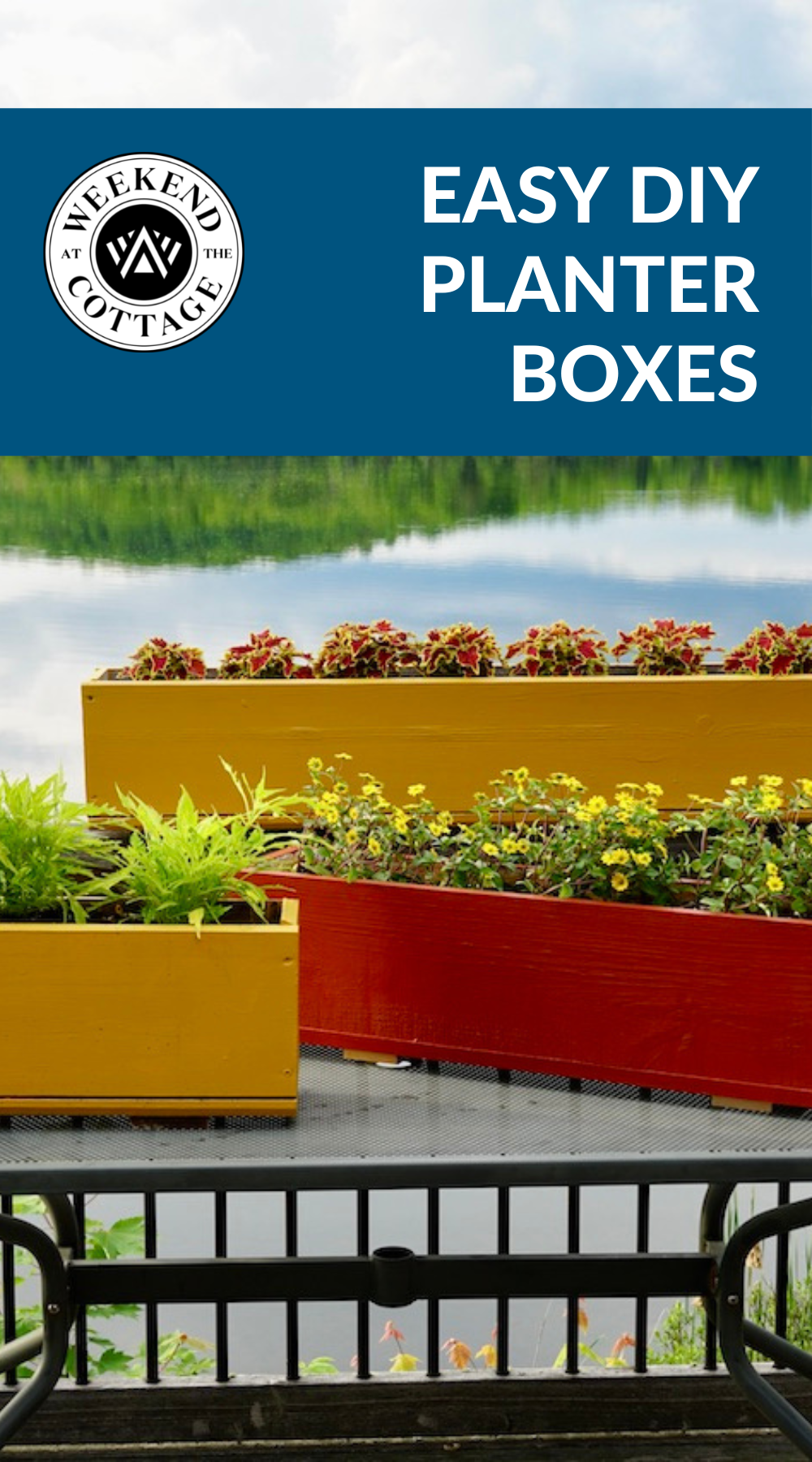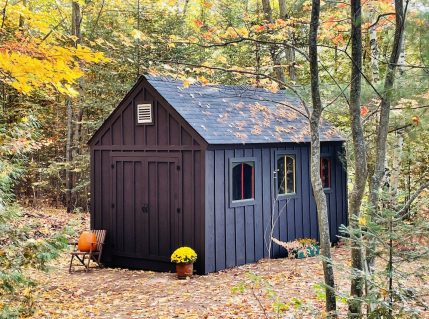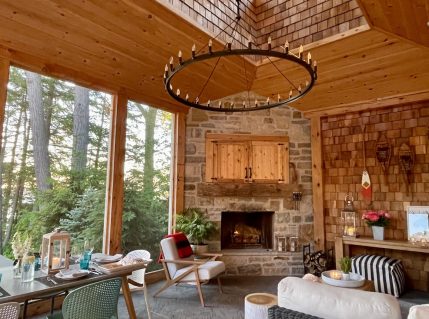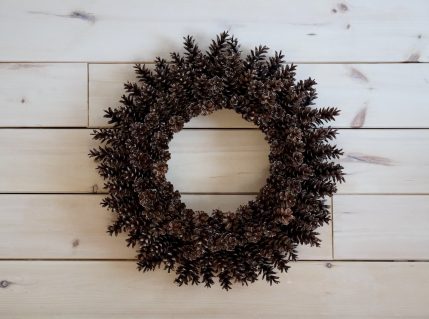Could your outdoor space use a little pick-me-up? Is your patio, deck or dock practically begging for a fresh new look? Don’t worry, we’ve got the perfect solution. With these FREE PLANS, a few lengths of wood, some screws, paint and a little Weekend at the Cottage know-how, we’ll show you how to make our EASY DIY PLANTER BOXES. So, grab a saw, drill, some paints and brushes and prepare to be amazed. These homemade outdoor planter boxes will make your outdoor space a place of beauty.
Often thought of as container gardening, planter boxes act as movable garden beds. Some folks think of them as a raised garden or raised planters, and we just love how they give a backyard even more locations for growing.
If Do-It-Yourself is what brought you here, we also have other posts that might be of interest. Make sure to check out our very, as in VERY, popular DIY PINE CONE WREATH complete with VIDEO TUTORIAL. We also recommend this THREE-SEASON ROOM MAKEOVER, especially if you’re looking for decor ideas. Lastly, check out HOW TO BUILD A STORAGE SHED. DIY and weekend projects are rewarding activities for weekends at the cottage.
We know what you’re thinking:
- What kind of wood or lumber should I use to make a planter box?
- How big should it be?
- What tools will I need to make it?
- Is a homemade planter box cheaper than a store-bought one?
- What do you line a planter box with?
- What can I grow in it?
Thankfully we’ve got the answers to all of those questions and more!
Let’s get started and make these EASY DIY PLANTER BOXES:
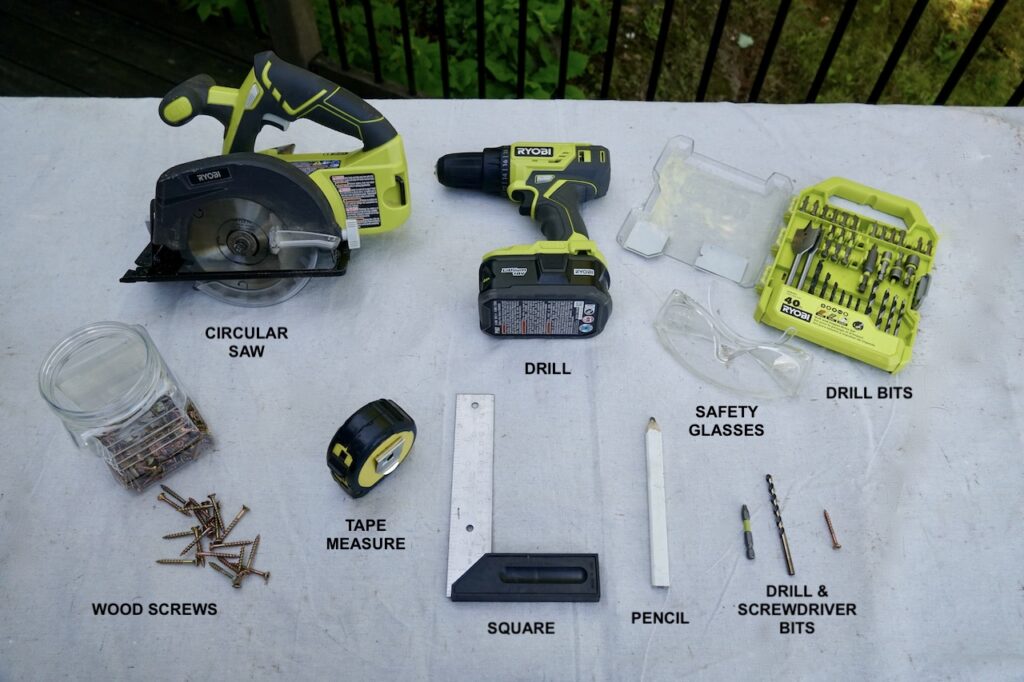
TOOLS
We purposely crafted this DIY project using as few tools as possible. You’ll be able to make these boxes using a circular or mitre saw, an electric drill with drill and screwdriver bits, a measuring tape, a square measure, a pencil, wood screws, paint and brushes. If you don’t have some of these tools, borrowing them from a friend is always a good idea. You can also swap out the drill and screws with a hammer and nails too. Make sure to watch this VIDEO to see how we put these tools to good use.
Because we want you to enjoy this experience it’s important to mention three additional tool-related points. Number one – safety first; always follow manufacturers’ guidelines on the safe operation of power tools. Number two is to always wear safety glasses, and number three, to avoid frustration, measure twice and cut once. We want your garden planter box project experience to be an enjoyable one.
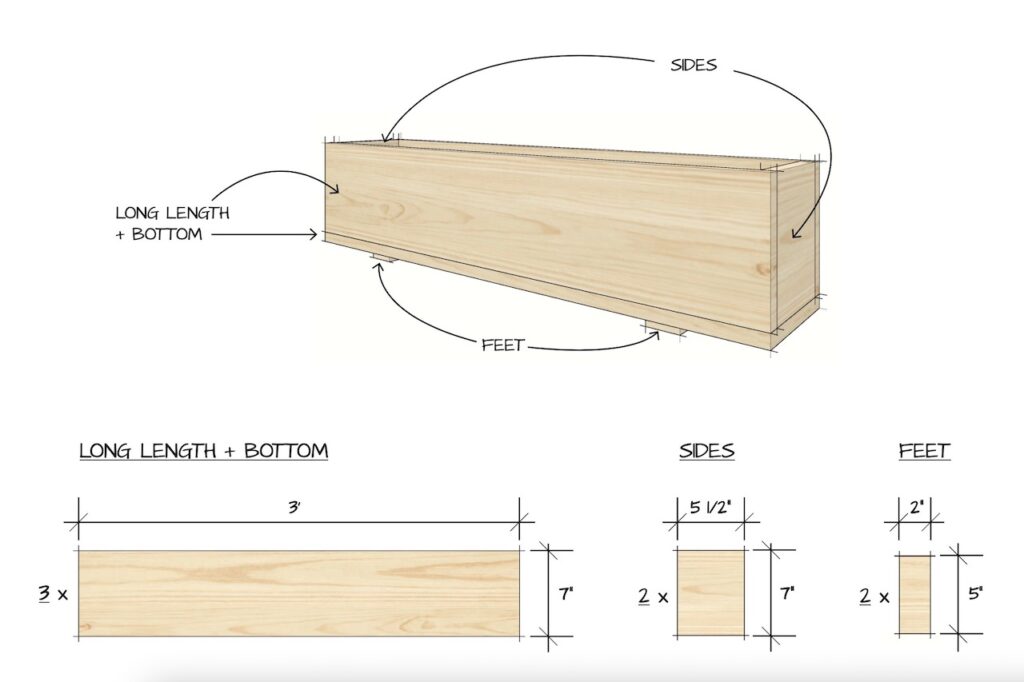
PLANS
Let’s hear it for free plans! I did a rough sketch of a basic wood planter box and sent it off to some design friends (thanks Abe & Sam!) who then turned it around as PLANS! We invite you to download, print and share. Couple of things to note: the lower section of the drawing indicates the exact measurements of the seven pieces of wood you’ll need to cut. Notice the dimensions for the longer lengths. Two are used for the long sides of the box while the third acts as the bottom of the planter. This helps keep the construction super straightforward. Although we showed how to make 3-foot long planter boxes in this post, you can also make them smaller or larger to suit your needs. Simply increase or decrease the length of the long sides and bottom to create a 2-foot, 4-foot or 5-foot long planter box. The side lengths and feet stay the same. Told you this was easy!
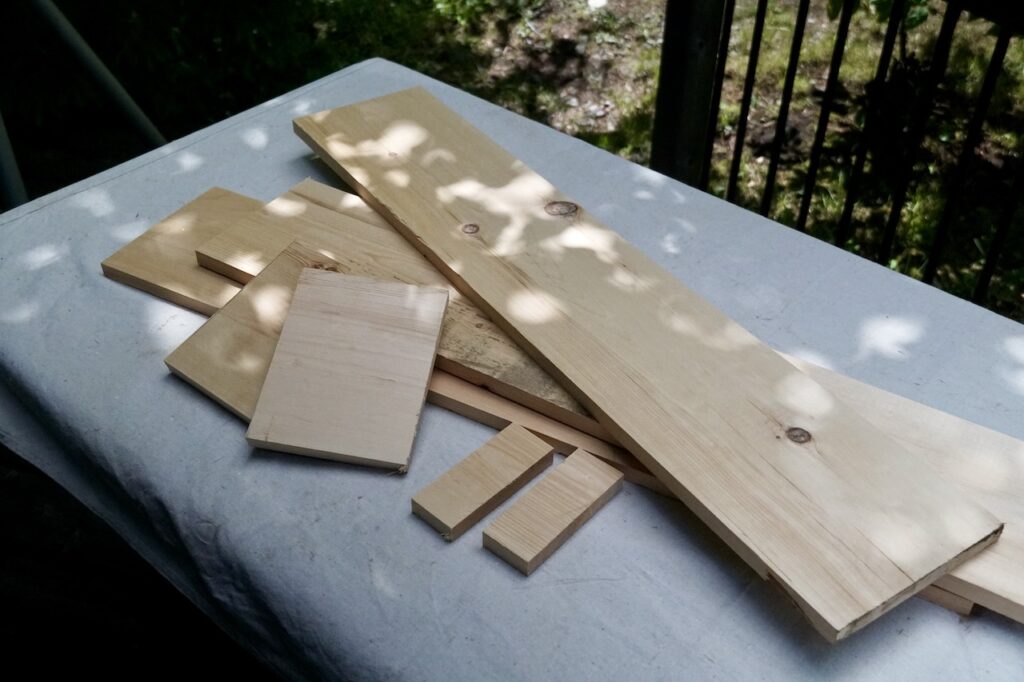
WOOD
Two things were top of mind as we planned this DIY project; make it easy but also make it as inexpensive as possible. Our goal was to have the end box cost less than something you might find at a local garden centre. Options for the type of wood to use included MDF (medium-density fibreboard), redwood, cedar and pine. The MDF, redwood and cedar were the most expensive, so we looked at pine. Of course, an even less expensive good option would be to use scrap wood or old pallets, but we like our find better.
Hats off to the guy at my local building centre who suggested using weather-resistant pine roof planks. One side of these boards has a smooth finish while the other is rough. That unfinished side, normally hidden as the underside of a roof, is what keeps the price of this pine product so low. I figured we could hide the rough side as the interior of the boxes and no one will be the wiser. It works perfectly and keeps that cost low, totalling $11 for each box.
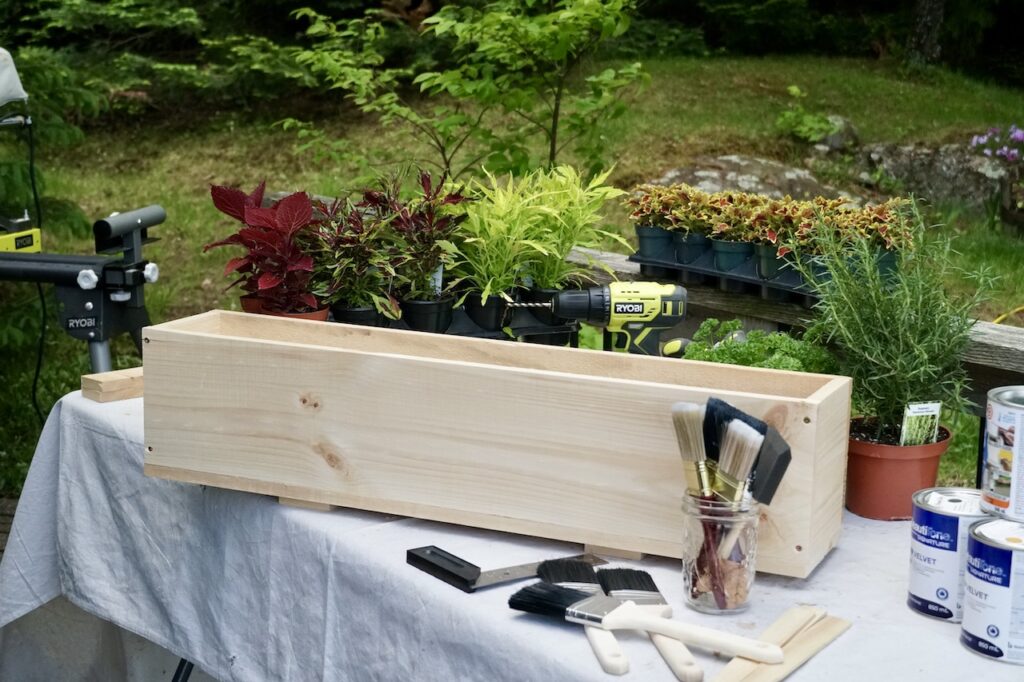
ASSEMBLY
Assembling the planter box is easy. Simply butt one of the long pieces up against one of the side pieces and attach them together using 1-inch wood screws. TIP: to avoid cracks in the wood, pre-drill the screw holes. Once the sides and lengths are attached and the four corners are connected, screw the bottom plank into the sides. The next step is to use a 1/2-inch drill bit to add drainage holes to the bottom. We’re then changing the drill back to the screwdriver bit to attach the two feet to the bottom of the box. The feet were purposely cut smaller so that they remain hidden. They keep the planter boxes elevated making them rot-resistant, ensuring you’ll be able to enjoy them for years to come.
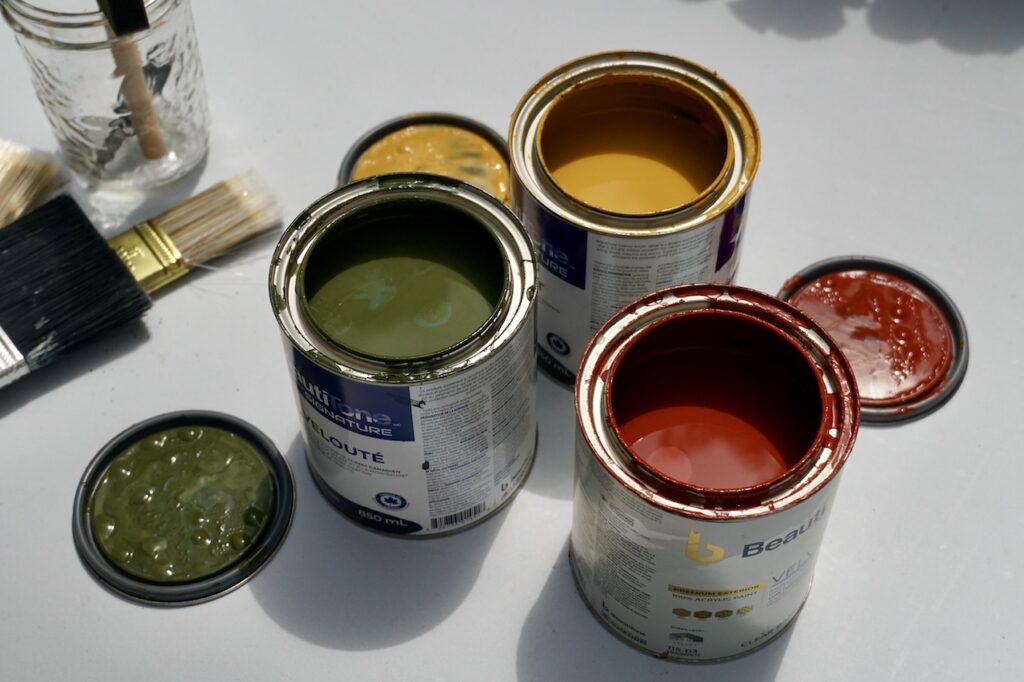
PAINT
Hopefully, you’ll follow our lead and give your planter boxes a coat of paint to match your surroundings. Of course, you can leave them as is or add a simple stain finish, but we like the painted look. If you do decide to paint, begin by applying a good coat of durable outdoor primer. Make sure to allow ample time for the primer to dry completely before adding your chosen colour.
As mentioned, select a paint colour to match your surroundings. I went with the same trim colours used both on the shed windows and on the front door of the cottage. I’ve painted varying sized boxes in CLOVER PATCH(green), APRIL LOVE (orange) and CHILD OF THE MOON (yellow). What can I say, I’m a colourful guy!
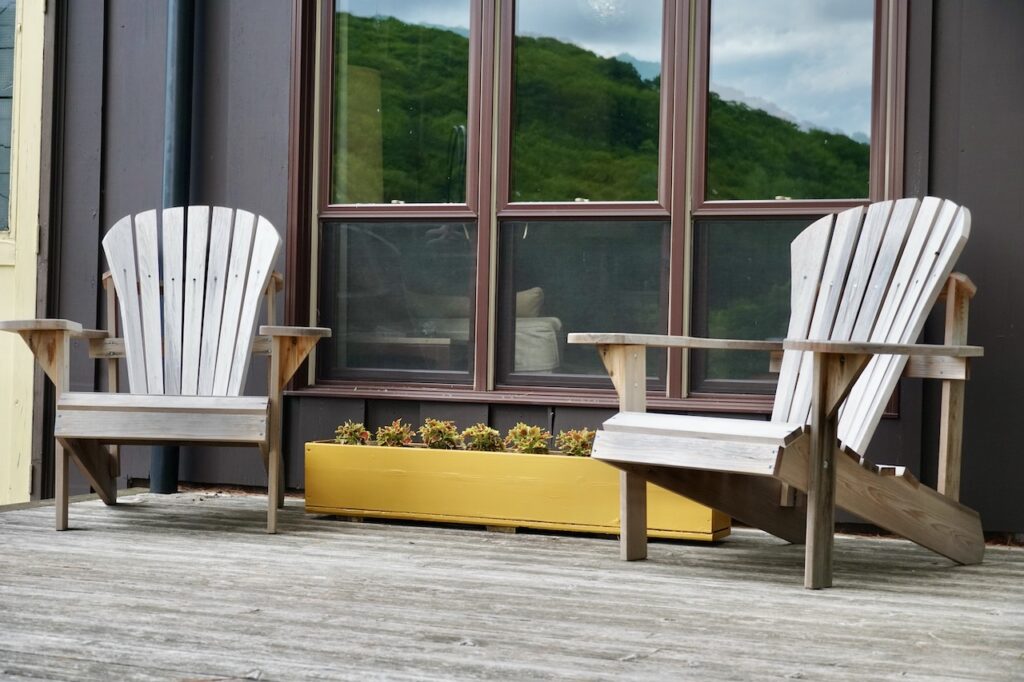
FILL
One of the best moments in this afternoon project is filling your completed box with flowers. We purposefully did not line our boxes with plastic pots or plastic covers; we like a more natural application. Emptying the boxes every fall ensures they’ll be around for years to come. To fill, begin with dirt or a premium potting soil enhanced with compost. After that, adding your favourite annuals is a breeze.
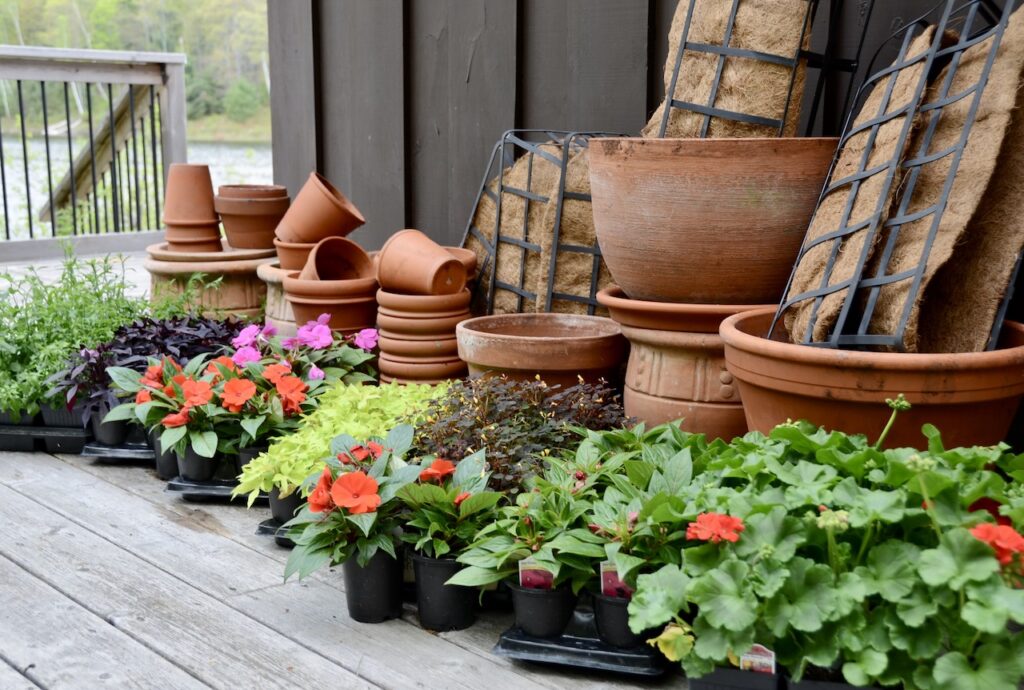
When selecting the types of flowers to include, consider things like location and amount of sun. This year I filled the dock boxes (full sun) with SANVITALIA and then the boxes up closer to the cottage with multi-coloured COPPERHEAD COLEUS and white NEW GUINEA IMPATIENS.
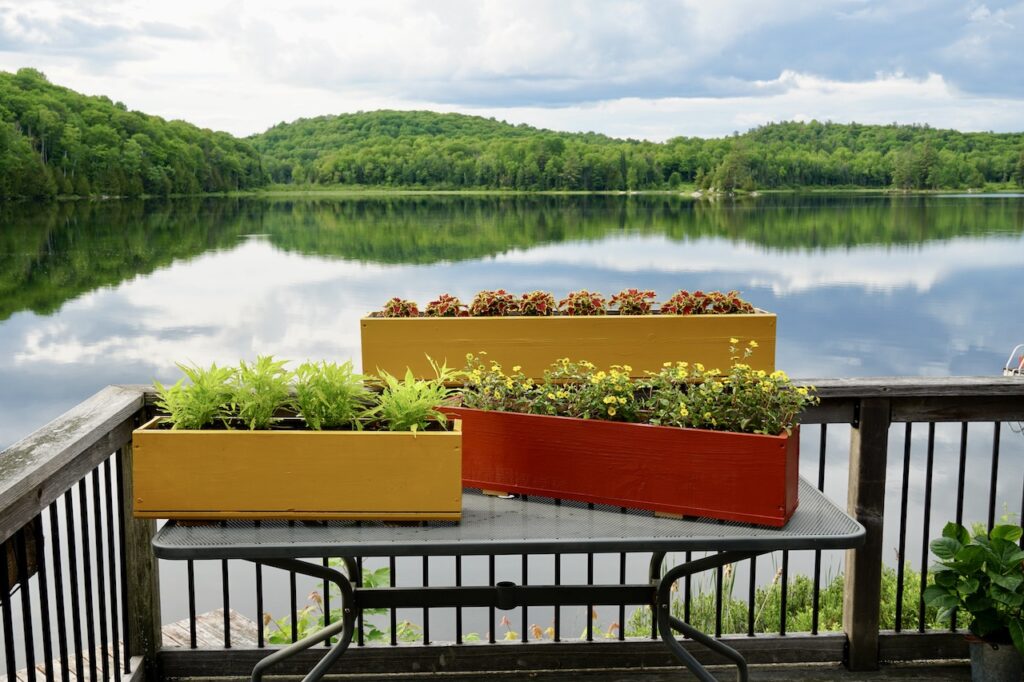
Talking about fill, I also want you to think outside of the (flower) box. Why not fill them with a collection of assorted herbs? A herb garden is a lovely idea for the at-home chef. Another option is to do vegetables or fruit. Pepper and tomato plants, as well as strawberries, do well grown in containers.
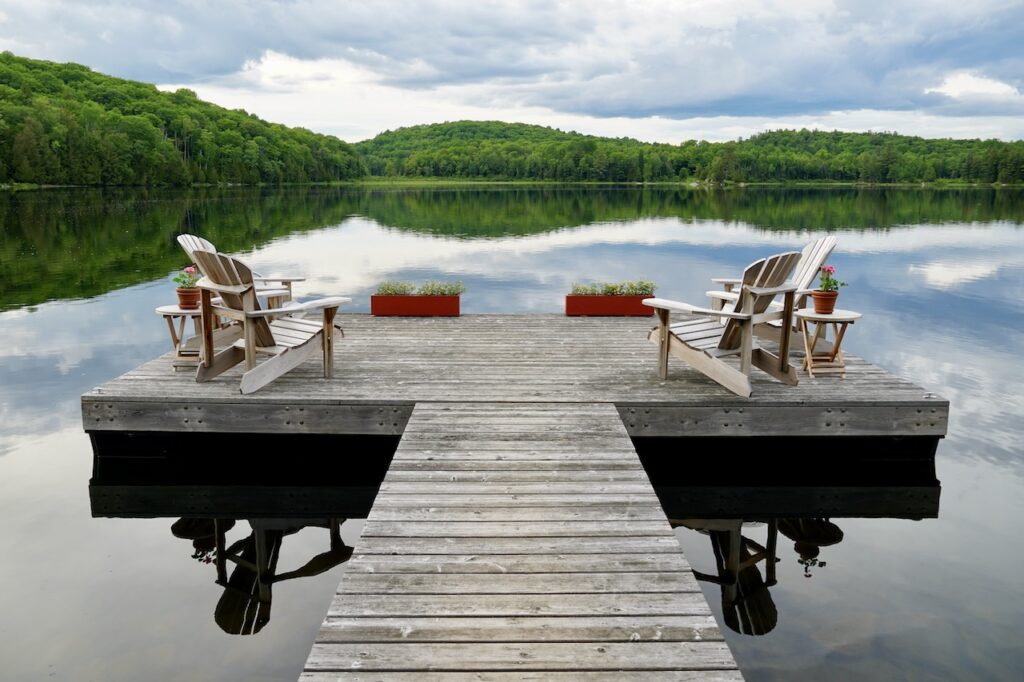
ENJOY
My final thoughts on this project are about how much enjoyment the flower boxes bring. Place them out on your front porch, deck, dock or patio to add interest and colour. We’re also thinking they’d make glorious window boxes, too! They certainly add an inviting welcome to any area.
Our EASY DIY PLANTER BOXES will be a lovely addition to your home or cottage.
Products used
Just click on the below links to purchase items through Amazon.com and add them to your collection. Happy shopping!


